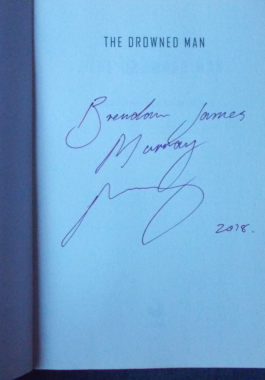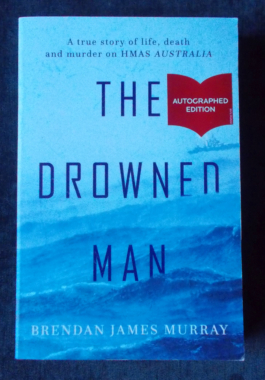- Sorry, this product is unavailable.
-
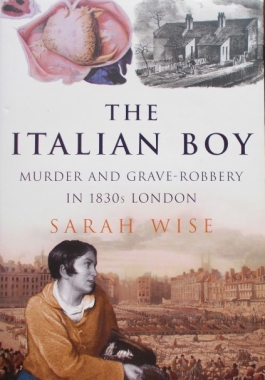
The Italian Boy: Sarah Wise
$30.00At the end of 1831, authorities unearthed a series of crimes at 3 Novia Scotia Gardens that appeared to be a copycat of the infamous Burke and Hare killings in Edinburgh only three years earlier. Soon three body-snatchers were on trial for providing the anatomy schools of London with suspiciously fresh bodies for dissection. They became famous as the London Burkers and their story was dubbed "The Italian Boy" case. The ensuing uproar forced legislation to end body-snatching in Britain. As well as covering the actual case, this book is a fascinating window on the lives of the poor of 1830s London. -
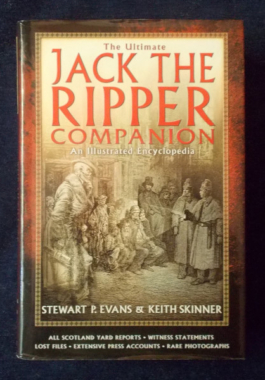 This really is the ultimate for Ripperologists - an encyclopedic work, solidly researched and profusely illustrated, collated from all the known and still-existing official records and supplemented by contemporary press reports. It presents. for the first time in one volume, a prime-source reference book on the eleven shocking prostitute murders that took place in the East End of London between 1888 and 1891. While there is no doubt that the Whitechapel Murders, as they were classified by Scotland Yard, were committed by more than one person, no one knows how many of the killings can be attributed to a single culprit. More than one murderer wore the guise of Jack the Ripper, and the identities of all suspects to this day remain unknown. Divorcing the facts of the Ripper case from the myths that have proliferated in fiction and film, this is a factual, documented narrative of the entire series of crimes, their forensic evidence, the official suspects and possible accomplices, police reports, inquests, newspaper articles of the day and rare photographs.
This really is the ultimate for Ripperologists - an encyclopedic work, solidly researched and profusely illustrated, collated from all the known and still-existing official records and supplemented by contemporary press reports. It presents. for the first time in one volume, a prime-source reference book on the eleven shocking prostitute murders that took place in the East End of London between 1888 and 1891. While there is no doubt that the Whitechapel Murders, as they were classified by Scotland Yard, were committed by more than one person, no one knows how many of the killings can be attributed to a single culprit. More than one murderer wore the guise of Jack the Ripper, and the identities of all suspects to this day remain unknown. Divorcing the facts of the Ripper case from the myths that have proliferated in fiction and film, this is a factual, documented narrative of the entire series of crimes, their forensic evidence, the official suspects and possible accomplices, police reports, inquests, newspaper articles of the day and rare photographs. -

Crime Scene: Esther McKay
$22.00Day after day my life was consumed by killings, distress and gruesome sites, each one adding another piece to an ever-growing mosaic that seemed to be made up of bloodied disposable gloves, plastic bags and human waste... When Esther McKay, an idealistic young constable with the NSW police, entered the tough, male-dominated world of forensic investigation, she was determined to hold her own. She soon found herself at deeply confronting crime scenes, often working alone and without supervision. After years of long, lonely, exhausting days and nights, and following a particularly harrowing high-profile case involving the disappearance of two young boys, Esther had a break-down and was diagnosed with post-traumatic stress disorder. Esther McKay takes us inside the life of a forensic investigator, and reveals as never before the extraordinary demands and dangers of forensic work. -
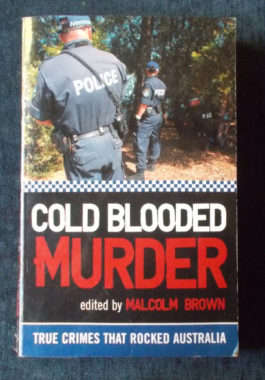 The true crimes that rocked Australia...Why do some people cross the threshold from rational behaviour to cold blooded murder? How can they do it? What motivates or activates that ability? Malcolm Brown and other award winning journalists examine the most cold blooded killings in modern day Australia. In this volume: The Murder of John Newman, M.P.; The Murderous Rampage of Danny Karam's Gang; The Bodies in the Barrels, Snowtown; The Murder of Margaret Tobin; Retribution in Wollongong: Paedophilia's Chain Reaction; Murder on Sydney's Northern Beaches; The Serial Infanticide of Kathleen Folbigg; The Murder of Maria Korp; The Spear-Gun Killer John Sharpe; Bumbling Matricide - The Murder of Margaret Wales-King and Paul King; Sef Gonzales - Getting Around the Problem of Poor Marks. Illustrated with black and white photographs.
The true crimes that rocked Australia...Why do some people cross the threshold from rational behaviour to cold blooded murder? How can they do it? What motivates or activates that ability? Malcolm Brown and other award winning journalists examine the most cold blooded killings in modern day Australia. In this volume: The Murder of John Newman, M.P.; The Murderous Rampage of Danny Karam's Gang; The Bodies in the Barrels, Snowtown; The Murder of Margaret Tobin; Retribution in Wollongong: Paedophilia's Chain Reaction; Murder on Sydney's Northern Beaches; The Serial Infanticide of Kathleen Folbigg; The Murder of Maria Korp; The Spear-Gun Killer John Sharpe; Bumbling Matricide - The Murder of Margaret Wales-King and Paul King; Sef Gonzales - Getting Around the Problem of Poor Marks. Illustrated with black and white photographs. -
 In the years between 1860 and 1880, dozens of bushrangers, some bold and famous, some little more than petty thieves, rampaged across the New South Wales and Victorian countryside - looting and murdering, bailing up travellers, harassing police, terrorising settlers. Perhaps the most famous of these in the 1860s was a handsome young man named Ben Hall, the first official outlaw under a new Act, shot dead by police in 1865. Other members of his gang, "Flash" Johnny Gilbert, Johnny Vane, O'Meally and Dunn, were all captured or shot by their pursuers. Also outlawed were Frederick Lowry, the ferocious Daniel Morgan, and Fred Ward, better known throughout New South Wales as "Thunderbolt". Finally, in this second volume of his History of Australian Bushranging, Charles White examines at length the incredible story of the Kelly Gang - Ned, Dan, Steve Hart and Joe Byrne.
In the years between 1860 and 1880, dozens of bushrangers, some bold and famous, some little more than petty thieves, rampaged across the New South Wales and Victorian countryside - looting and murdering, bailing up travellers, harassing police, terrorising settlers. Perhaps the most famous of these in the 1860s was a handsome young man named Ben Hall, the first official outlaw under a new Act, shot dead by police in 1865. Other members of his gang, "Flash" Johnny Gilbert, Johnny Vane, O'Meally and Dunn, were all captured or shot by their pursuers. Also outlawed were Frederick Lowry, the ferocious Daniel Morgan, and Fred Ward, better known throughout New South Wales as "Thunderbolt". Finally, in this second volume of his History of Australian Bushranging, Charles White examines at length the incredible story of the Kelly Gang - Ned, Dan, Steve Hart and Joe Byrne. -

The scene awaiting the policemen entering the charming suburban house at 313 Carl Drive was one they would never forget. Three children and their mother had been hacked to death in their beds, the sheets and walls soaked in blood. A butcher knife and an axe lay nearby. There appeared to be no physical evidence and the detective at first suspected a bungled robbery. But as the clues were sifted and family members and friends were questioned, an appalling possibility presented itself: Could David Hendricks, grief-stricken father, away on a business trip, have methodically killed his family before he left? And why would a successful business man and devoted member of a fundamentalist religious group want his entire family eliminated? The prosecution painted a much darker picture of David Hendricks...Convicted by his first jury, awarded a new trial, a second jury concluded that Hendricks had not been proven guilty - beyond a reasonable doubt. Illustrated with black and white photos.
-

Fatty: Andy Edmonds
$12.00Many people remember Roscoe Arbuckle as 'the fat comedian who raped that girl'. He was one of the highest paid actors of his day and Hollywood was at his feet. On September 5 1921 he threw a lavish party to celebrate his $3 million Paramount contract. It got wildly out of hand and ended abruptly when a starlet named Virginia Rappé let out a terrifying scream. Rappé died five days later and Arbuckle was charged with first-degree murder . Three trials later, he was finally acquitted - and by then his multi million dollar career was devastated and his life was ruined. Recreating the glittering Hollywood of the 1920s, Edmonds draws on new and hitherto unpublished evidence to determine what really happened on that fateful day. Illustrated with photographs. -
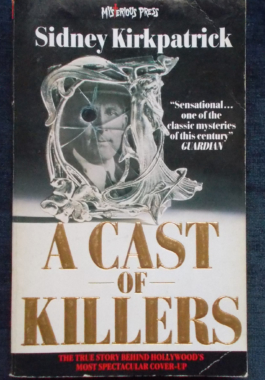 On February 1, 1922, the distinguished silent-film director William Desmond Taylor was shot dead in his Los Angeles bungalow. Reports of strange activities at the scene circulated soon after. When the police arrived, the head of Paramount Studios was burning a bundle of papers in the fireplace, and a well-known actress was searching the house for letters she claimed were hers. Despite a full-scale investigation - at one time there were over 300 suspects - the case was never solved; to this day it has remained a lingering Hollywood scandal. In 1967, more than forty years after Taylor's death, director King Vidor felt determined to solve the mystery which had haunted him throughout his career. He wanted to make a film about it. Through his intimate knowledge of both the studios and the stars, he succeeded - where dozens of professional detectives had failed - in discovering the identity of the murderer. But his findings were too explosive. He decided he could never go public and locked his evidence away. After Vidor's death in 1982, Sidney D. Kirkpatrick, Vidor's authorised biographer, gained access to the evidence and reconstructed the amazing story of Taylor's murder and Vidor's investigation. With a cast of suspects that includes the actress Mabel Normand, a reputed drug addict; the beautiful ingénue, Mary Miles Minter; Mary's domineering mother, Charlotte Shelby; Taylor's homosexual houseman; and Taylor's secretary, who bore an uncanny resemblance to Taylor's mysteriously elusive brother, this true crime story has all the elements of a classic murder mystery. Covered up for more than half a century, the full story can now be told in all its riveting, shocking detail. Contains black and white photographs.
On February 1, 1922, the distinguished silent-film director William Desmond Taylor was shot dead in his Los Angeles bungalow. Reports of strange activities at the scene circulated soon after. When the police arrived, the head of Paramount Studios was burning a bundle of papers in the fireplace, and a well-known actress was searching the house for letters she claimed were hers. Despite a full-scale investigation - at one time there were over 300 suspects - the case was never solved; to this day it has remained a lingering Hollywood scandal. In 1967, more than forty years after Taylor's death, director King Vidor felt determined to solve the mystery which had haunted him throughout his career. He wanted to make a film about it. Through his intimate knowledge of both the studios and the stars, he succeeded - where dozens of professional detectives had failed - in discovering the identity of the murderer. But his findings were too explosive. He decided he could never go public and locked his evidence away. After Vidor's death in 1982, Sidney D. Kirkpatrick, Vidor's authorised biographer, gained access to the evidence and reconstructed the amazing story of Taylor's murder and Vidor's investigation. With a cast of suspects that includes the actress Mabel Normand, a reputed drug addict; the beautiful ingénue, Mary Miles Minter; Mary's domineering mother, Charlotte Shelby; Taylor's homosexual houseman; and Taylor's secretary, who bore an uncanny resemblance to Taylor's mysteriously elusive brother, this true crime story has all the elements of a classic murder mystery. Covered up for more than half a century, the full story can now be told in all its riveting, shocking detail. Contains black and white photographs. -

The Butchers: Brian Lane
$6.00What is the most effective way to dispose of a troublesome corpse? Eat it? Dip it in a vat of acid? Feed it to the pigs - or turn it into sausages? Just pop it in a furnace, maybe...? There's more than thirty cases here: from Catherine Hayes who set a trend in dismemberment in 1726 when she hacked off her husband's head and tossed it into the Thames, to Dennis Nilson who was doing much the same to his victims in 1983; from Marcel Petiot's quicklime pits in Occupied Paris, to New York's infamous Albert 'The Cannibal' Fish. Yet however meticulous and ingenious, none of them got away with it - painstaking investigation and forensics led to the final unmasking of the sadists and psychotics who sought such bloody concealment of their crimes. With black and white photographs. -
 October, 2011: At first it looked like a swag, said the grader driver who found the body just off the road outside the outback town of Katherine. Police identify the dead man as Ray Nicefero, who'd recently appeared in court for aggravated assault and breaching a domestic violence order. Three days later, three young local suspects were arrested: Christopher Malyschko; Darren 'Spider' Halfpenny; and 19-year-old indigenous Zak Grieve. A month later, Bronwyn Buttery, Ray's former partner and Christopher's mother, is arrested. But when the accused face court in the rough justice system of the Northern Territory, it soon becomes apparent there are few certain, provable facts to be had. Depending on who was talking, a loving friend could be an abusive monster; a battered wife a conniving temptress. And a joke between mates about the best way to dispose of a body becomes a conspiracy to murder. The outcome of the case is no less murky, thanks to the NT's mandatory sentencing laws, which, the judge said, 'brings about injustice'. This is the story of murder in an outback town and the extraordinary aftermath; and it raises important questions such as how an indigenous man who was not present at a murder can be sentenced to jail for twenty years.
October, 2011: At first it looked like a swag, said the grader driver who found the body just off the road outside the outback town of Katherine. Police identify the dead man as Ray Nicefero, who'd recently appeared in court for aggravated assault and breaching a domestic violence order. Three days later, three young local suspects were arrested: Christopher Malyschko; Darren 'Spider' Halfpenny; and 19-year-old indigenous Zak Grieve. A month later, Bronwyn Buttery, Ray's former partner and Christopher's mother, is arrested. But when the accused face court in the rough justice system of the Northern Territory, it soon becomes apparent there are few certain, provable facts to be had. Depending on who was talking, a loving friend could be an abusive monster; a battered wife a conniving temptress. And a joke between mates about the best way to dispose of a body becomes a conspiracy to murder. The outcome of the case is no less murky, thanks to the NT's mandatory sentencing laws, which, the judge said, 'brings about injustice'. This is the story of murder in an outback town and the extraordinary aftermath; and it raises important questions such as how an indigenous man who was not present at a murder can be sentenced to jail for twenty years. -
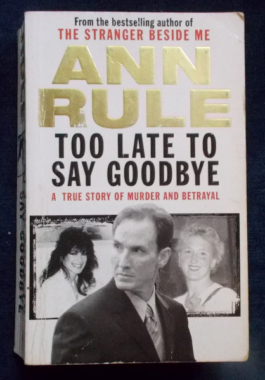 Beautiful Jenn Corbin appeared to have it all: two dear little boys, a posh home in one of the upscale suburbs of Atlanta, expensive cars, a plush houseboat and a husband - Dr. Bart Corbin, a successful dentist - who was tall, handsome, and brilliant. Then in December 2004, Jenn was found dead with a bullet in her head. Apparently a suicide. But Gwinnett County detective Marcus Head was not totally convinced, nor was Jenn's family, who could not believe she would take her own life. Only later would detectives learn that another beautiful woman in Dr. Corbin's past had been found dead in exactly the same way - and who had also been ruled a suicide...
Beautiful Jenn Corbin appeared to have it all: two dear little boys, a posh home in one of the upscale suburbs of Atlanta, expensive cars, a plush houseboat and a husband - Dr. Bart Corbin, a successful dentist - who was tall, handsome, and brilliant. Then in December 2004, Jenn was found dead with a bullet in her head. Apparently a suicide. But Gwinnett County detective Marcus Head was not totally convinced, nor was Jenn's family, who could not believe she would take her own life. Only later would detectives learn that another beautiful woman in Dr. Corbin's past had been found dead in exactly the same way - and who had also been ruled a suicide... -
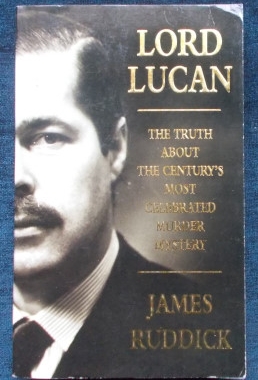
Lord Lucan: James Ruddick
$12.00This book promises the truth behind the century's most celebrated murder mystery. On a wintry night in November 1974, Sandra Rivett, nanny to the children of Lord and Lady Lucan, was brutally bludgeoned to death in the basement of their Belgravia home. Lady Lucan was also attacked and identified the attacker as her estranged husband, the 7th Earl of Lucan. That night, Lord Lucan vanished and has never been found, despite numerous sightings all over the world. The author has interviewed many of those involved, including, for the first time, Lord Lucan's wife Veronica. He gained access to the missing Earl's private papers, which yield remarkable new information. He also re-examines the forensic evidence and questions the key witnesses to produce the most likely explanation to date of what really happened on November 7, 1974. Illustrated with black and white photographs.
-
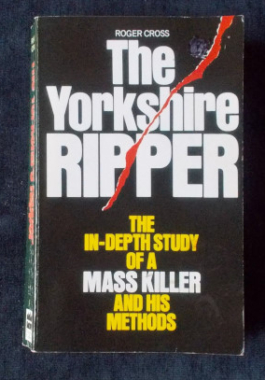 The author, the chief crime reporter for the Yorkshire Post worked on the sensational 'Yorkshire Ripper' case from the very beginning and was afforded the full co-operation and confidence of the Yorkshire Police. He delved deeply into every aspect of the case, interviewing, questioning and researching both Peter Sutcliffe's background, the strategies used and the problems encountered by the the police force assigned to catch him. Illustrated with black and white photographs.
The author, the chief crime reporter for the Yorkshire Post worked on the sensational 'Yorkshire Ripper' case from the very beginning and was afforded the full co-operation and confidence of the Yorkshire Police. He delved deeply into every aspect of the case, interviewing, questioning and researching both Peter Sutcliffe's background, the strategies used and the problems encountered by the the police force assigned to catch him. Illustrated with black and white photographs. -
 It can take years for love to turn to murderous hate - or it can happen overnight. What drives a woman or man to committ the ultimate betrayal - to take the life of a parent, a child, a sibling, a lover? This is a volume of unflicnhing exploration of fourteen well-known - and not so well-known - murder in the family cases and it takes the reader inside the life and mind of both the killer and victim. The cases include: The slaying of Maureen Thompson by her husband Rory; the murders of the four Folbigg children by their mother Kathleen; the sudden explosion of murderous rage within Sef Gonzales that resulted in the destruction of those closest to him; and more. Illustrated with black and white and colour photographs.
It can take years for love to turn to murderous hate - or it can happen overnight. What drives a woman or man to committ the ultimate betrayal - to take the life of a parent, a child, a sibling, a lover? This is a volume of unflicnhing exploration of fourteen well-known - and not so well-known - murder in the family cases and it takes the reader inside the life and mind of both the killer and victim. The cases include: The slaying of Maureen Thompson by her husband Rory; the murders of the four Folbigg children by their mother Kathleen; the sudden explosion of murderous rage within Sef Gonzales that resulted in the destruction of those closest to him; and more. Illustrated with black and white and colour photographs. -
 Discover surprising answers in this true-crime treasury of 100 of the most fascinating cases of all time. More than two centuries in the development of modern forensic procedures come to vivid life as everything from handwriting analyses and voiceprints to ballistics, DNA testing and psychological profiles reveal who did it - and, in some startling cases, who didn't do it. Categories: Ballistics; Cause Of Death; Disputed Documents; DNA Typing; Explosives And Fire; Fingerprinting; Forensic Anthropology; Odontology; Psychological Profiling; Identification Of Remains; Serology; Time Of Death; Trace Evidence; Voice Printing. The cases detailed herein range from the 189os to the 1990s. Illustrated with black and white photographs.
Discover surprising answers in this true-crime treasury of 100 of the most fascinating cases of all time. More than two centuries in the development of modern forensic procedures come to vivid life as everything from handwriting analyses and voiceprints to ballistics, DNA testing and psychological profiles reveal who did it - and, in some startling cases, who didn't do it. Categories: Ballistics; Cause Of Death; Disputed Documents; DNA Typing; Explosives And Fire; Fingerprinting; Forensic Anthropology; Odontology; Psychological Profiling; Identification Of Remains; Serology; Time Of Death; Trace Evidence; Voice Printing. The cases detailed herein range from the 189os to the 1990s. Illustrated with black and white photographs. -

White Mischief: James Fox
$12.00On January 24, 1941, the body of Josslyn Hay, Earl of Erroll was found lying on the floor of his Buick outside Nairobi - with a bullet in his head. Erroll, at 39, was influential in the Kenyan Happy Valley community, charming, good at bridge and polo and devoted to the seduction of other men's wives - preferably rich ones. Incredibly ruthless in his hedonistic pursuit of pleasure, he had wrecked many marriages. Sir Henry 'Jock' Delves Broughton, whose wife Diana was Erroll's current conquest, had the most obvious motive. He stood trial with implacable calm, was acquitted and emerged unscathed. No-one has ever been convicted for the murder and the case has become a classic mystery together with the scandalous exposé of the extravagant, sybaritic way of life of the enchanted feudal paradise known since the 1920s as Happy Valley, the community of English aristocrats who subscribed to the three As: altitude, alcohol and adultery. -
 Jeffrey Dahmer, Ted Bundy, John Wayne Gacy, The Hillside Strangler . . . serial murderers are the most horrific of all criminals. Kate Kray, whose marriage to gangster Ronnie Kray offered her access to a gruesome underworld few would dare to enter, peers into the minds of the worst killers to reveal the awful truth of their abominable acts. The extreme nature of their violence and their shocking lack of remorse makes for uncomfortable yet fascinating reading. From obsessive sexual predators and extreme sadists to cannibals and head hunters, each type of psychopath is examined, their crimes told with grim frankness. Kate's connections allow her to ask uncomfortable questions few would dare to ask such men. Offering extraordinary insight into the motivations of violent perpetrators often portrayed as monsters, this book begs the question of whether such individuals can themselves be viewed as victims of a troubled past, or merely as exponents of pure evil.
Jeffrey Dahmer, Ted Bundy, John Wayne Gacy, The Hillside Strangler . . . serial murderers are the most horrific of all criminals. Kate Kray, whose marriage to gangster Ronnie Kray offered her access to a gruesome underworld few would dare to enter, peers into the minds of the worst killers to reveal the awful truth of their abominable acts. The extreme nature of their violence and their shocking lack of remorse makes for uncomfortable yet fascinating reading. From obsessive sexual predators and extreme sadists to cannibals and head hunters, each type of psychopath is examined, their crimes told with grim frankness. Kate's connections allow her to ask uncomfortable questions few would dare to ask such men. Offering extraordinary insight into the motivations of violent perpetrators often portrayed as monsters, this book begs the question of whether such individuals can themselves be viewed as victims of a troubled past, or merely as exponents of pure evil.


